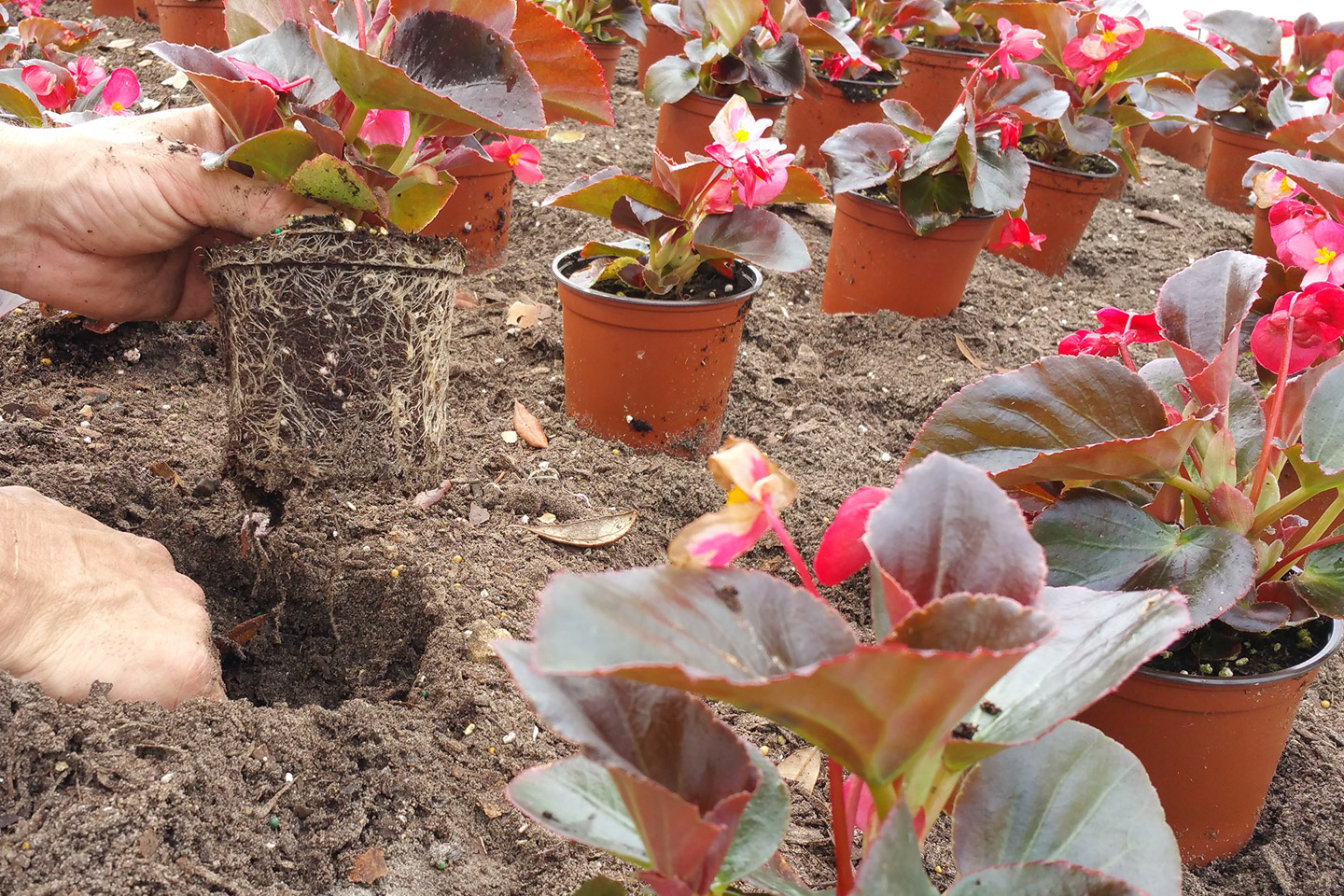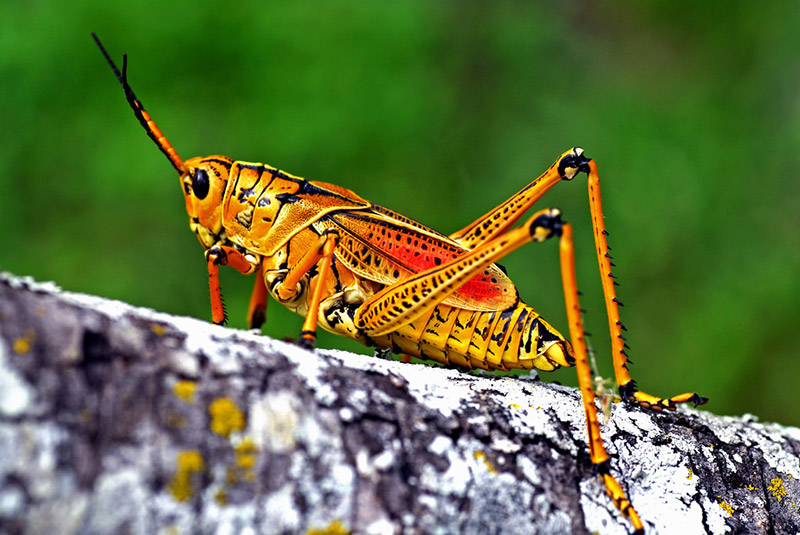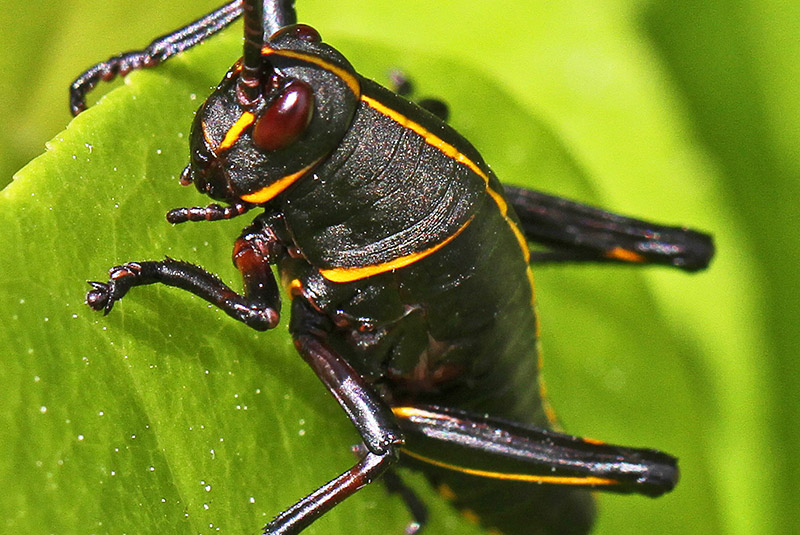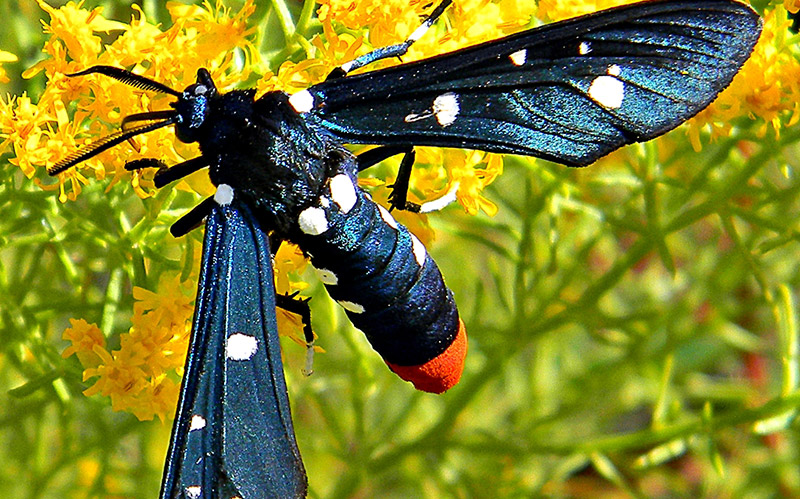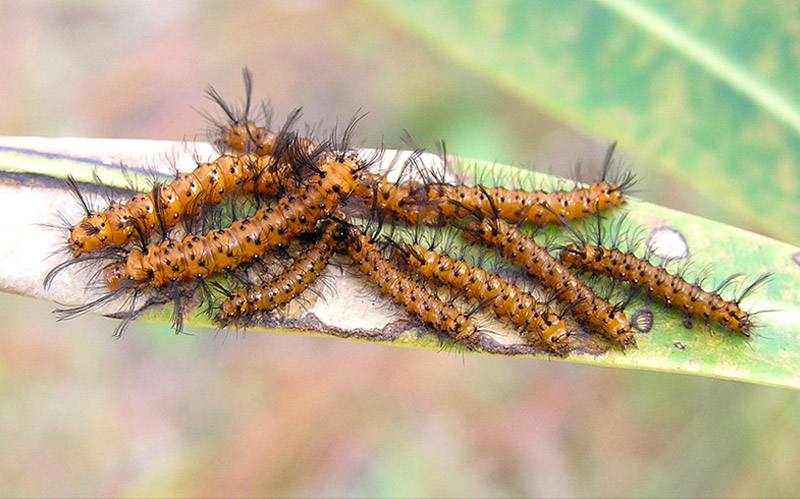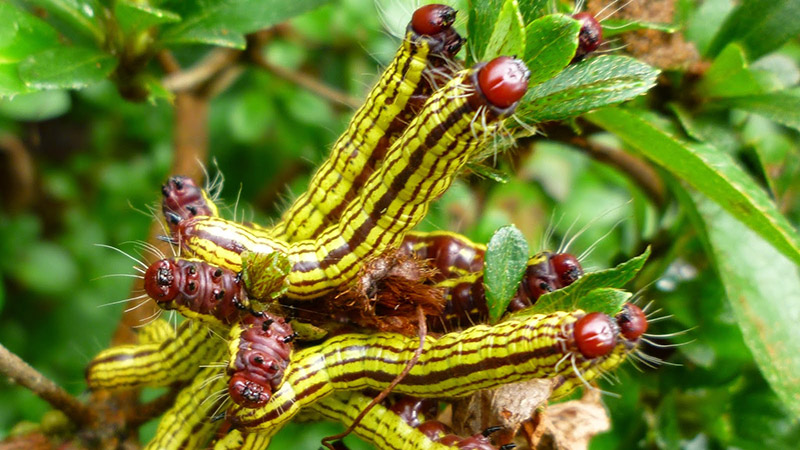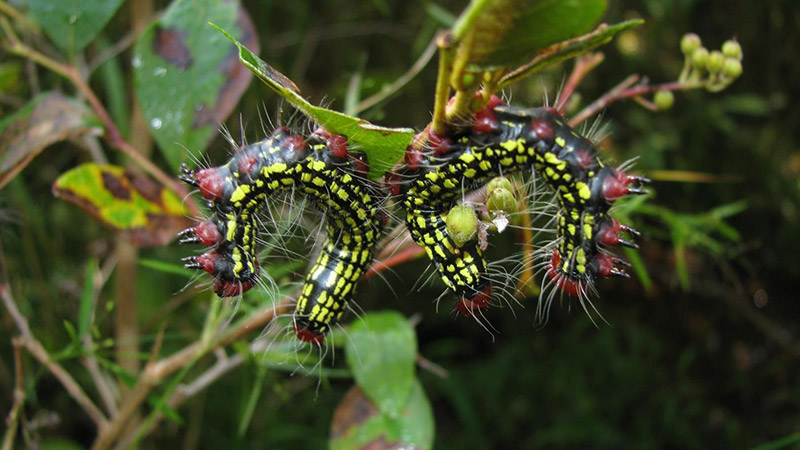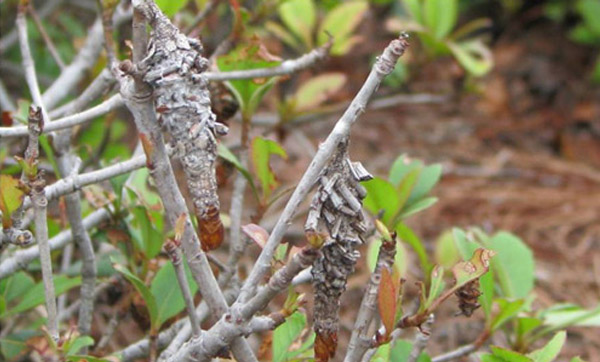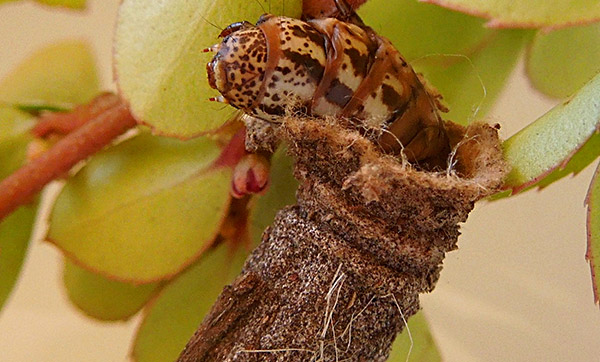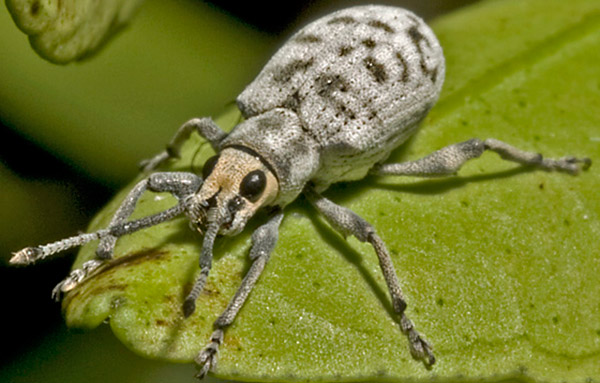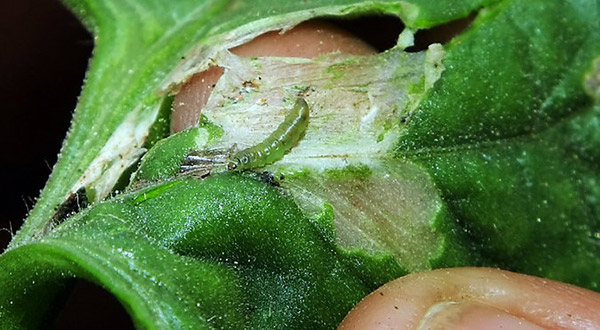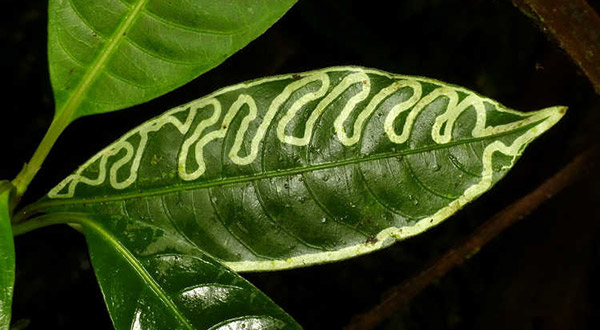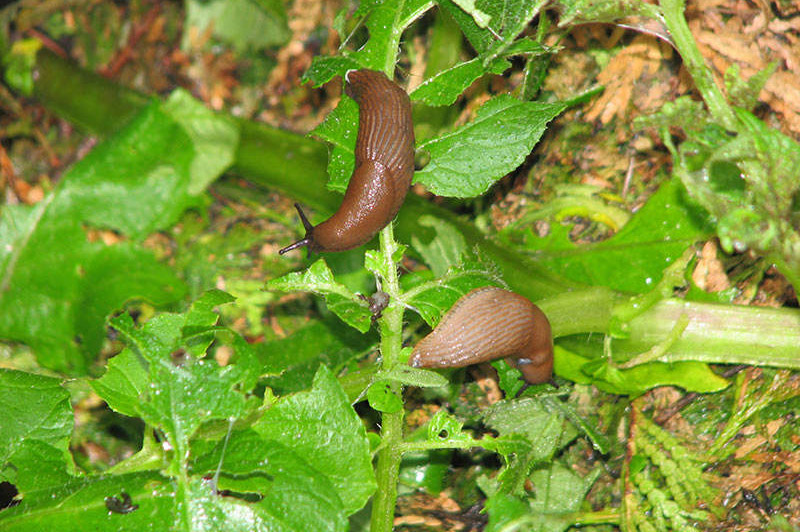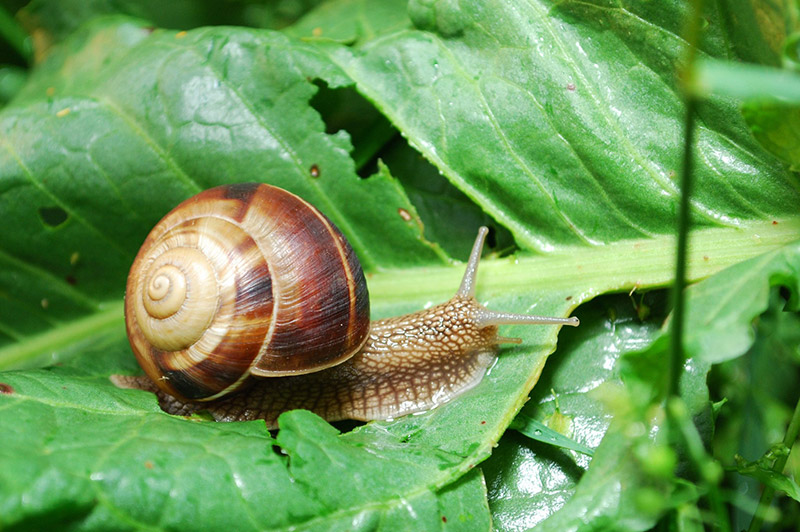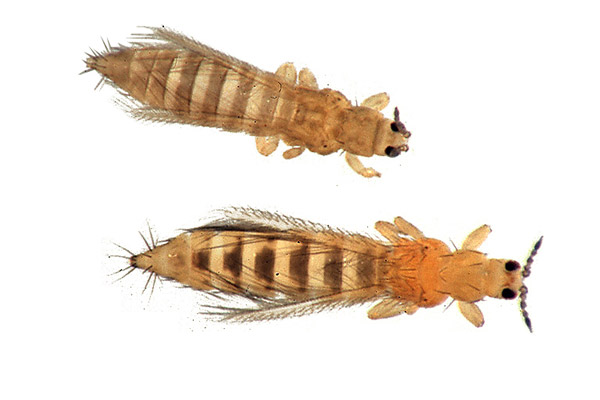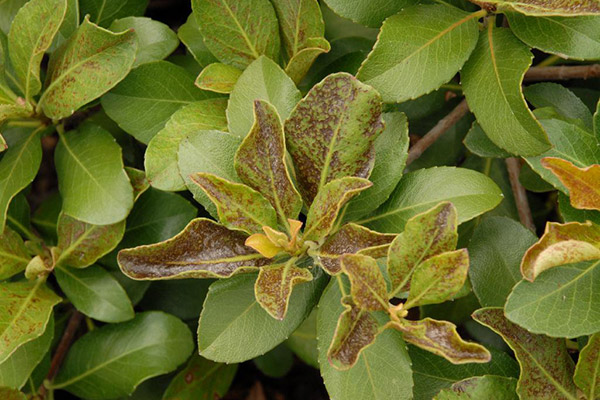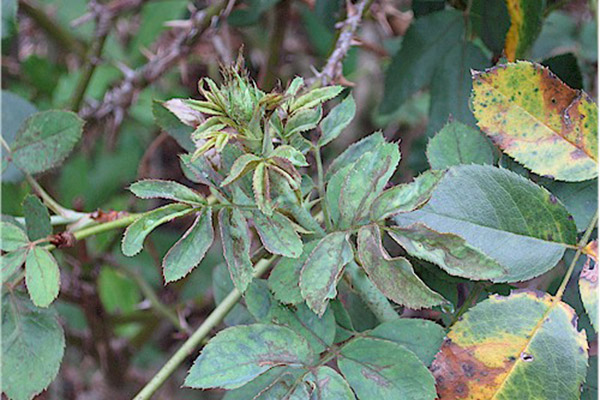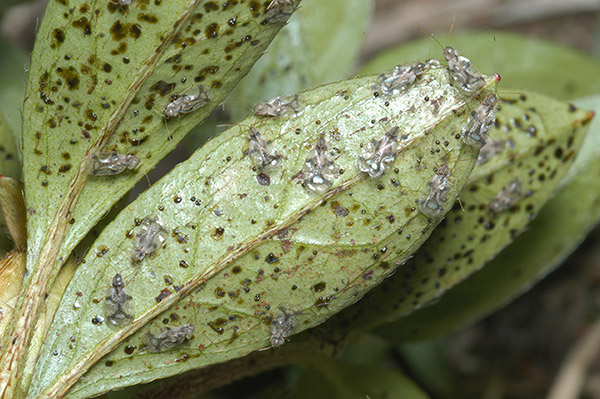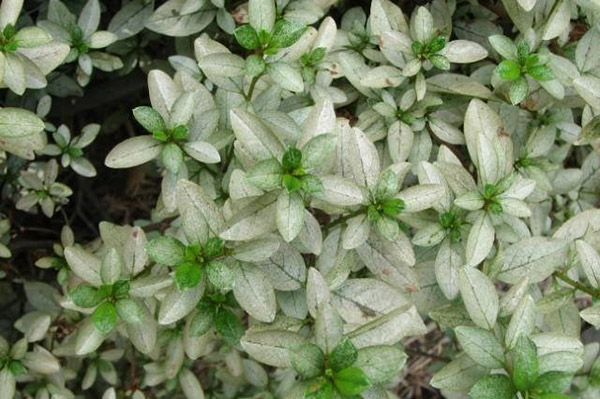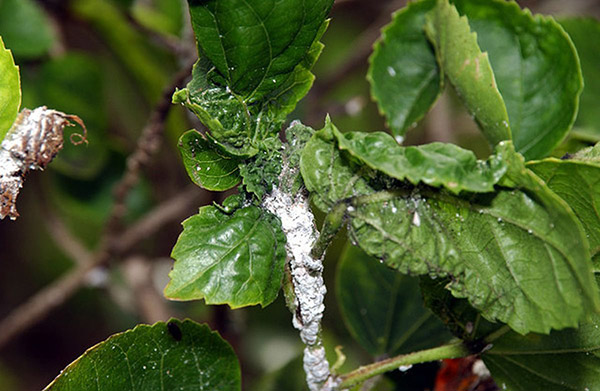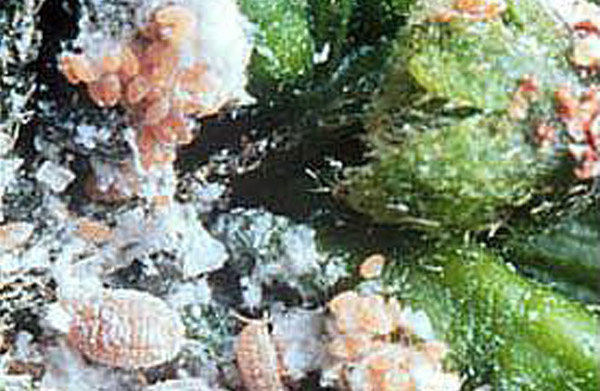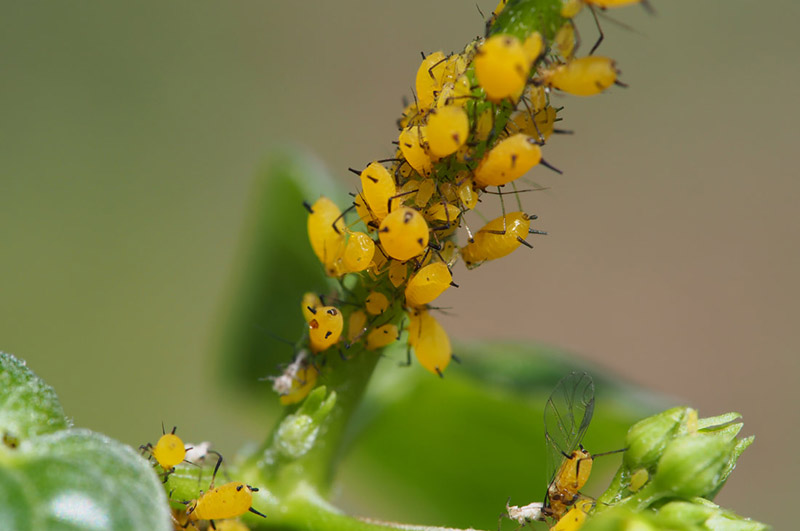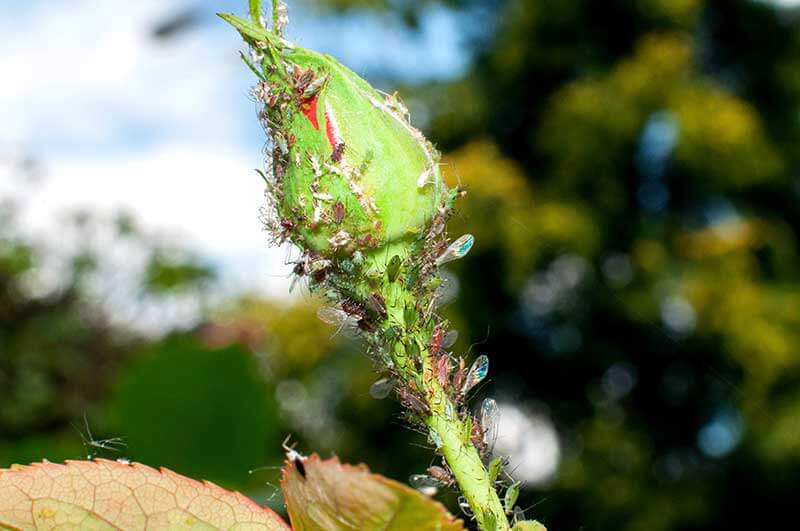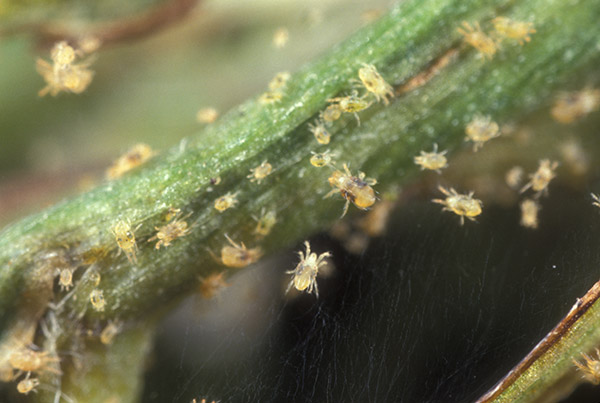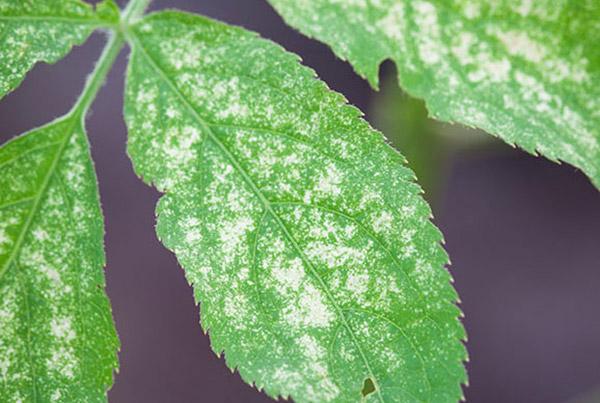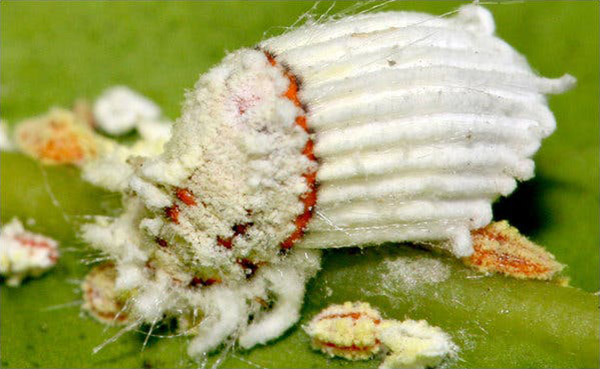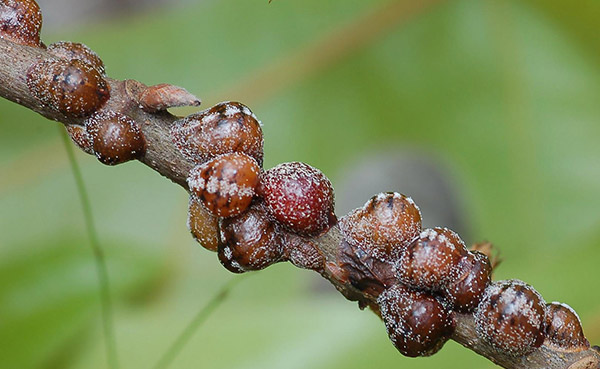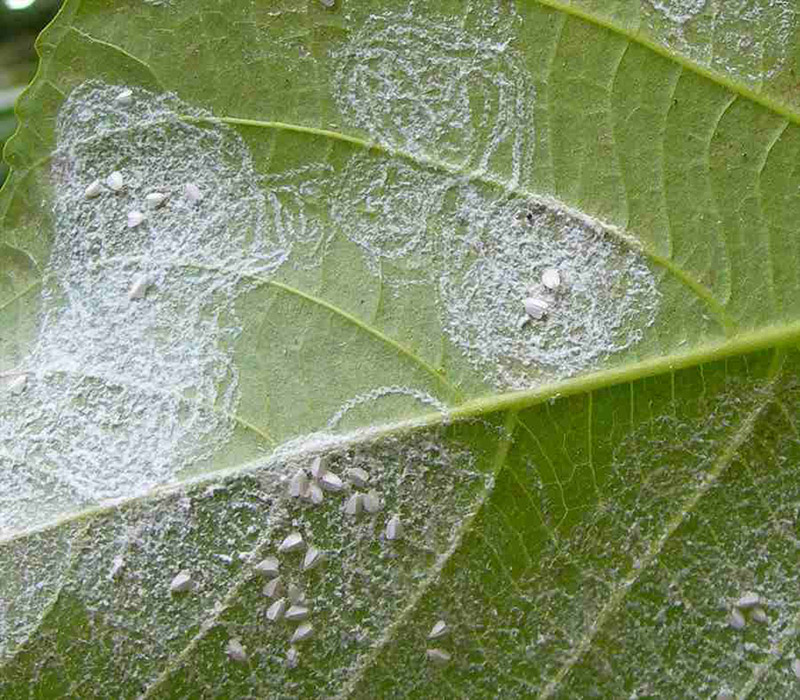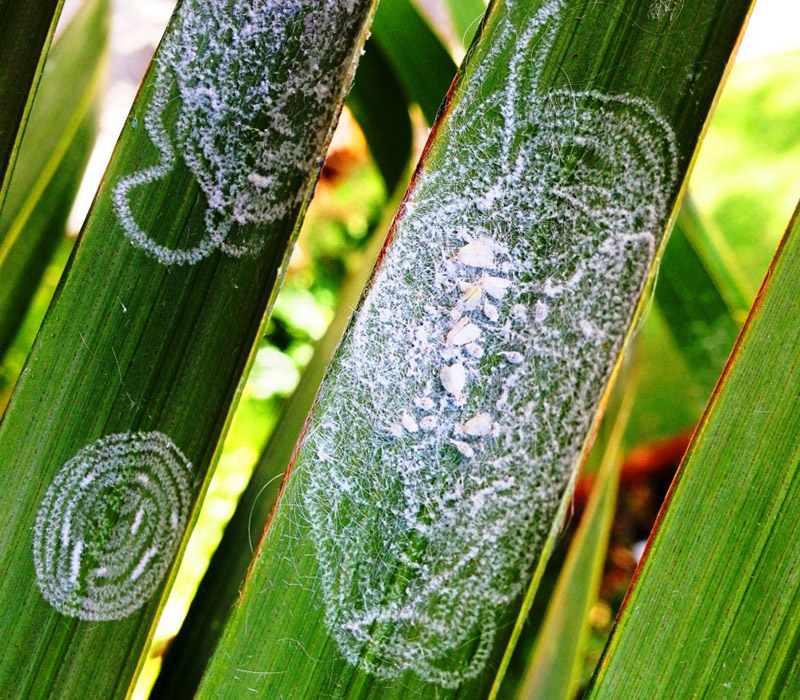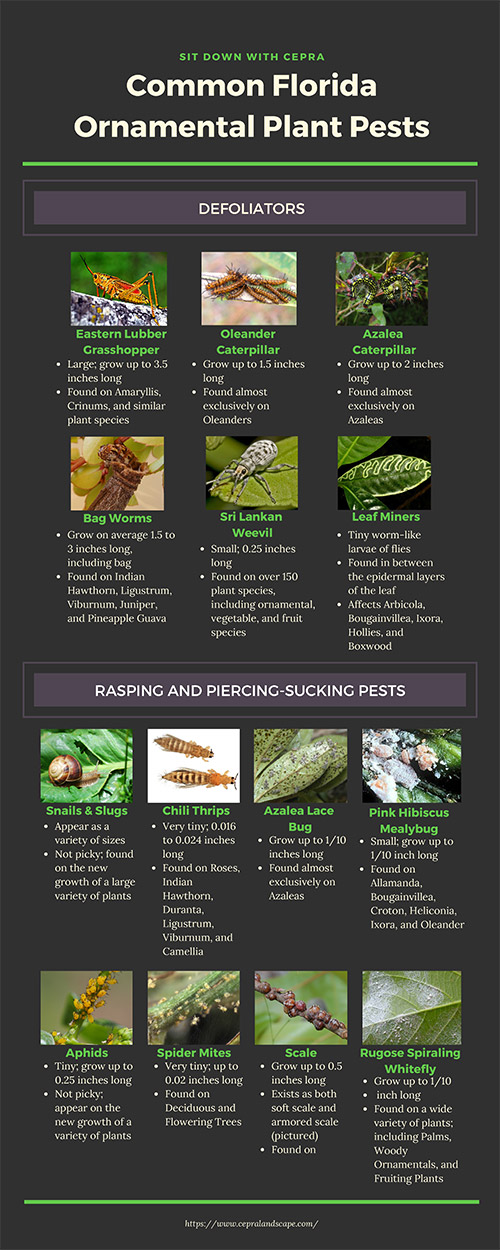What's Damaging Your Landscape? Part 4: Ornamental Shrub Pests - Sit Down with CEPRA
Ornamental Shrub Pests
Ornamental plants play a key role in a landscape's needs. From their aesthetic appeal in beautifying a space with color and flowers, to their environmental impact in the ecosystem that enables them to filter pollutants out of air and stabilize soils, these plants provide a great benefit to a community. The benefits of ornamental plants go beyond their looks - shrubs are used as windbreakers, trees are utilized for their shade, and both house beneficial insects and pollinators. With such outstanding benefits, it is important we do our part and protect the health of these plants the best we can. Here are the most common pests that devastate ornamental plants in Florida.
Defoliators
Eastern Lubber Grasshopper - This Florida native is one of a few species of grasshoppers that occurs in large enough numbers to cause serious damage to landscape ornamentals. The general color of adults is a dull yellow, with color patterns varying with different black and red spots and markings. Adults can grow up to 3 1/2 inches long. The Eastern Lubber is quite clumsy and slow in movement and mostly travels by walking and crawling due to its short wings that makes the grasshopper incapable of prolonged flight. Their large size, bright colors, and slow speed makes them very easy to spot. The immature eastern lubber grasshopper differs dramatically in appearance from the adults. They are typically almost completely black, but with a distinctive yellow, orange, or red stripe. The best time to combat these pests is while they are in this nymph stage, as their exoskeletons are not yet fully developed. These grasshoppers are long-lived, and typically reach their peak populations in late summer. Lubbers feed on many kinds of plants, but seem to favor amaryllis, crinums, and related species. They readily climb plants, will eat irregular holes in vegetation and or can completely strip foliage from plants. Due to their tough exoskeleton and bitter taste, these pests generally live unbothered in the landscape. Their year to year populations can cycle up and down, possibly due to the action of parasites. Lubbers only have one natural predator - the loggerhead shrike, a small bird that learned how to combat the toxins in the lubbers by leaving them in the sun to be "cooked" out.
Oleander Caterpillar - This bright orange caterpillar with tufts of long black hairs is a common sight on Oleander plants in Florida. This damaging stage of this pest can significantly defoliate a large portion of the plant in a short time. The adult stage of the oleander caterpillar is sometimes called the polka-dot wasp moth. Its body and wings are a beautiful iridescent blue/green, with small white dots found on the body, wings, legs and antennae, and the tip of the abdomen is red/orange. These moths are slow-flying and active during daylight hours. Natural enemies include predatory stink bugs, parasitic flies and wasps, and the imported red fire ant. Due to the poisonous diet of the oleander caterpillar, birds and small mammals do not feed on them.
Azalea Caterpillar - Azalea caterpillars feed almost exclusively on Azaleas. The mature caterpillar is about two inches long, and is predominately black, with the last segment being red with eight broken yellow (occasionally white) lengthwise stripes. The head and legs are a mahogany-red color. They are active from July through October. Young larvae skeletonize the leaves, leaving out the midribs and veins, while the larger caterpillars will eat the entire leaf. They feed in groups and can often defoliate much of the plant before they are detected. When threatened these caterpillars will raise their head and posterior in unison.
Bag Worms - Common bagworms feed on a variety of plants, including Indian Hawthorn, Ligustrum, Viburnum, Juniper and Pineapple Guava. The larvae hatch in late spring and early summer. Bagworm caterpillars make distinctive 1.5- to 3-inch-long spindle shaped bags that can be seen hanging from the branches of shrubs. The worms are female, and never leave their bag. These bags are constructed from twigs, leaves and silk. Sometimes the bags are mistaken for pinecones or other plant structures. The bag both protects and camouflages the caterpillar during feeding and growth. Severe pest infestations can damage both the aesthetics and overall health of plants. Their voracious appetites can strip a plant to death. However, since they are not considered toxic to touch, their bags can simply be picked and disposed of, as well as treated with a pesticide, to reduce their spread.
Sri Lankan Weevil - The Sri Lankan weevil feeds on a wide host range of over 150 plant species, including ornamental, vegetable and fruit species. The Sri Lankan weevil is fairly new to Florida, being first detected in 2000. Adult Sri Lankan weevils vary in length from approximately less than a quarter to a third of an inch. They have a yellow head, and a whitish-gray body. The adults prefer new the foliage of ornamental plants, whereas the larvae injure root systems. When adult weevils feed on leaves, they feed inward from the leaf margins (or edges), causing leaf notching. Intense feeding by numerous weevils may cause plant decline or stunting. With healthy plants, however, the feeding damage is more cosmetic in nature producing an unattractive looking plant.
Leaf Miners - The most common leaf miners found on ornamental plants are the larvae of small flies. Leaves are affected when they are punctured by a female fly as it lays its eggs. As the larvae feed, they move between the upper and lower epidermal leaf surfaces, knowing as "mining." The larvae tunnel through the leaf creating a narrow, whitish colored serpentine mine or blotch. The tunnel is clear, except for the trail of black fecal material left behind. Many ornamental plants are hosts to leaf miners, but Aboricola, Bougainvillea, Ixora, Hollies, and Boxwood are some of the preferred hosts. Healthy plants should be able to tolerate injury before losing vigor. However, during heavy infestations, plants will appear bleached or faded and their aesthetic value is reduced. In some cases, the leaves turn yellow and drop, due in part of pathogenic fungi and bacteria entering the old mines. Populations are generally prevented from reaching damaging levels by parasitic wasps.
Rasping & Piercing-Sucking Insects
Snails & Slugs - Slugs and snails can be troublesome pests in the garden. The visible difference between these closely related pests is that snails have hard, protective, external shells, while the slugs do not. Slugs and snails feed on both living and decomposing plant material, but they prefer young, tender plant growth. Both will leave large, irregularly shaped holes in the leaves of plants. They also leave slime trails, which can trap dirt and block sunlight from reaching the leaves. Slugs and snails feed primarily at night, although they can also come out during foggy overcast weather, after rain, or after an irrigation cycle. Routinely irrigated landscapes are especially attractive to slugs and snails. During the day, they seek protection from dehydration in cool, damp locations.
Chilli Thrips - Over 100 plant species can become hosts for this pest. The ornamental plants most frequently affected in the landscape are Roses, Indian Hawthorn, Duranta, Ligustrum, Viburnum, and Camellia. Detecting and managing chilli thrips is difficult because they are very small, only 0.016 to 0.024 inch in length. Chilli thrips prefer to feed on buds, blooms, and tender plant tissue. Infestations occur in the landscape typically when plants are producing new growth. Symptoms of damage appear as misshapen and distorted foliage along with a bronzing color on new leaves. Severe infestations can defoliate and or slow plant growth.
Azalea Lace Bug - This pest occurs in most of the eastern United States, including Florida. The adult lace bug is 1/10 inch long and cream-colored. It has netted lacy wings, marked with black or brown patches. The Azalea lace bug is a pest of major concern in the nursery and landscape industry due to its aesthetic plant damage. Even in an established landscape planting, Azalea lace bugs can cause considerable damage. The insects in this family generally live and feed on the underside of leaves. Nymphs and adults cause damage by piercing and removing the cell contents from leaf tissues. Due to the removal of majority of the chlorophyll containing tissues, the leaf surface become stippled, bleached, silvery or chlorotic in appearance. Since early season damage on Azaleas can result in aesthetic injury for the remainder of the growing season, it is important to control lace bugs early.
Pink Hibiscus Mealybug - This pest affects many species of ornamental plants including Allamanda, Bougainvillea, Croton, Heliconia, Ixora, and Oleander. The mealybug forms colonies on the host plant. If left undisturbed, the colonies will grow into large masses of white, waxy deposits on branches. Adult mealybugs are small (about 3 mm long) and pink in color and covered with a waxy secretion. Nymphs (crawlers) of the pink hibiscus mealybug disperse by walking and by the wind. Pink hibiscus mealybug feeds on the soft tissues of the plant and injects a toxic saliva that causes curling and distortion of the leaves. The shoot tips develop a bushy appearance and the entire plant may become stunted. Flower buds may abort, and stems may twist. The mealybug excretes honeydew which encourages the development of black sooty mold. Very high mealybug populations can kill plants. Parasites and predatory ladybugs can provide some control on lower populations.
Aphids - These tiny insects are sometimes difficult to spot as adults rarely exceed one-quarter inch in length and come in a variety of colors, including black, gray, light green, and pink. These are soft-bodied insects that typically affect the new and emerging leaves. Aphids remove plant fluids from leaves, causing the leaves to turn yellow, become distorted and/or wilt. Common symptoms of an aphid infestation include curling, stunted, and/or discoloration of leaves along with the production of honeydew.
Spider Mites - These pests are closely related to spiders and ticks more-so than insects. The red spider mite is oval-shaped and generally attacks deciduous and flowering fruit trees. With prime environmental conditions, red spider mites can grow from larvae to adults in one week. This rapid development can potentially lead to extensive damage as the mites remove fluids from individual leaf cells, causing a flecked or stippled appearance. As the pest population grows, the foliage will take on a bronze and/or yellow discoloration.
Scale Insects - Named for their scales or shell-like body covering, scale insects are generally small and less than one-half inch in size. These insects are divided into two categories based on body coverings. Soft scale: The body covering is a cottony, powdery, or waxy layer that is inseparable from the body. Armored scale: The shield-like covering is made of shed skin and wax and is not attached to the body.
Rugose Spiraling Whitefly - This pest is a fairly new species in Florida and was first identified in Miami-Dade County in 2009. Rugose spiraling whitefly adults are about three times larger than the commonly found whiteflies. They can be easily identified by the presence of a pair of irregular light brown bands across the insect's wings. Rugose spiraling whitefly feeds on a wide range of host plants including palms, woody ornamentals, and fruits. Of all the palms its favorite host plant is the Coconut palm. Females lay eggs on the underside of leaves in a spiral pattern and cover them with white waxy material. Rugose spiraling whitefly will cause stress by using its needle-like mouth parts to remove nutrients and water from the host plant. Infestation of this pest usually does not kill the host plant, but it can interfere with normal growth. The Rugose spiraling whitefly excretes honeydew, which provides an excellent resource for the growth of sooty mold. Once it dries, the sooty mold forms thick layers on the host leaves and other non-plant surfaces. These layers of sooty mold can disrupt the photosynthesis process in palm leading to physiological disorders. The honeydew also attracts ants and wasps that protect the whiteflies from their natural enemies.
Conclusion
Ornamental plants are what gives a community its character and charm. Ensuring they are properly cared for is crucial to making your community stand out. Pests that affect these plants can not only harm their aesthetic appeal, but completely destroy the plant. Staying alert and checking for these pests ensures we can prevent the damage they cause, thus preserving our beautiful landscapes. Below is handy guide to help you as you care for yours.
Part 1: Turf Grass Pests | Part 2: Tree Pests | Part 3: Palm Pests | Part 4: Ornamental Shrub Pests
